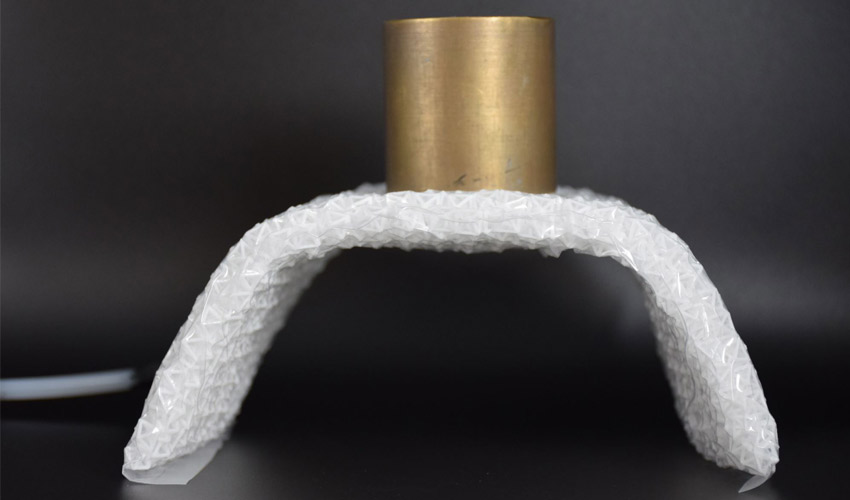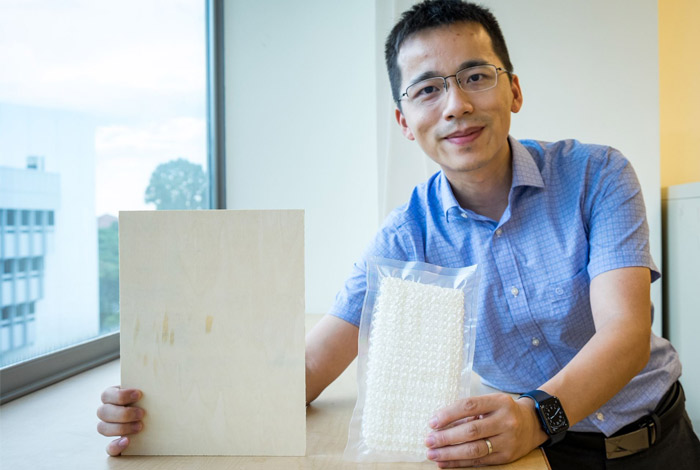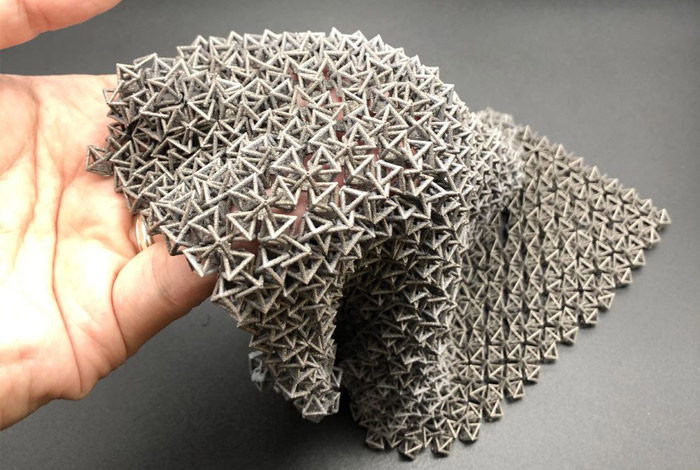Researchers 3D Print Structured Fabrics Capable of Supporting 50 Times Their Weight

A team of scientists from Nanyang Technological University in Singapore, and the Caltech Institute of Technology in California have developed 3D-printed structured fabrics capable of supporting 50 times its own weight. Inspired by chainmail, it could stiffen on demand and thus increase its rigidity by 25. The researchers first designed this structure from nylon and then carried out the same experiment using aluminum. The results are promising and show that this type of part could be used to reinforce exoskeletons for example, in bulletproof vests or any application where there is a risk of strong impacts.
Chainmail is an armor that has been around for thousands of years; made up of numerous links joined together, it offers protection to its wearer while keeping a level of flexibility. This is the idea that this team of researchers wanted to reproduce: the objective was to design a light structure capable of changing shape and properties under the effect of a determining factor. They, therefore, imagined a structure made up of several mesh parts which, when placed under vacuum in a plastic bag, stiffens and offers high rigidity. Chiara Daraio, G. Bradford Jones Chair in Mechanical Engineering and Applied Physics at Caltech, adds: “We wanted to make materials that could change stiffness to order. We would like to create a fabric that goes from soft and pliable to stiff and load-bearing in a controllable way.”

Once under vacuum, the structure is more resistant. (Photo Credit: NTU)
Construction and Applications of the Structure
The team explains that they have relied on nylon to 3D print these structured fabrics. These are composed of several octahedra, shapes with eight triangular faces. They come to interlock with each other, thus creating these hollows and this flexibility. By placing this 3D printed structure in a vacuum plastic, flexibility turns into hardness and rigidity. In order to test the new properties of the fabric, the researchers would have dropped a steel ball weighing 30 grams on the structure, at a speed of three meters per second. A deformation of 3 mm was observed, compared to 26 mm when the tissue was flexible. The team claims that the structure could support a total load of 1.5 kilograms which is 50 times more than his own weight.
The manufacture of such a fabric could meet various needs, in particular when it comes to obtaining more reinforcement. Wang Yifan, assistant professor at NTU’s School of Mechanical and Aerospace Engineering, explains: “With a lightweight, adjustable engineering fabric – easily changeable from soft to stiff – we can use it to meet patient needs and Of the aging population, for example, to create exoskeletons that can help them stand, carry loads and assist them in their daily tasks.”

The team also 3D-printed aluminum. (Photo Credit: NTU)
Structured Fabrics: From Nylon to Aluminum
The researchers extended their hypothesis and tested the same experiment but with aluminum with the objective to design an even more resistant structure. The team says the results obtained are very encouraging, the structure reacting in the same way as the structure printed in nylon. Wang Yifan concludes: “To further increase the stiffness and strength of the material, we are now working on fabrics made from various metals, including aluminum, which could be used for large-scale industrial applications requiring greater load capacity, such as bridges or buildings.”
What do you think of this 3D printed structure inspired by chainmail? Let us know in a comment below or on our Facebook and Twitter pages! Don’t forget to sign up for our free weekly newsletter to receive all the latest 3D printing news straight to your inbox!






